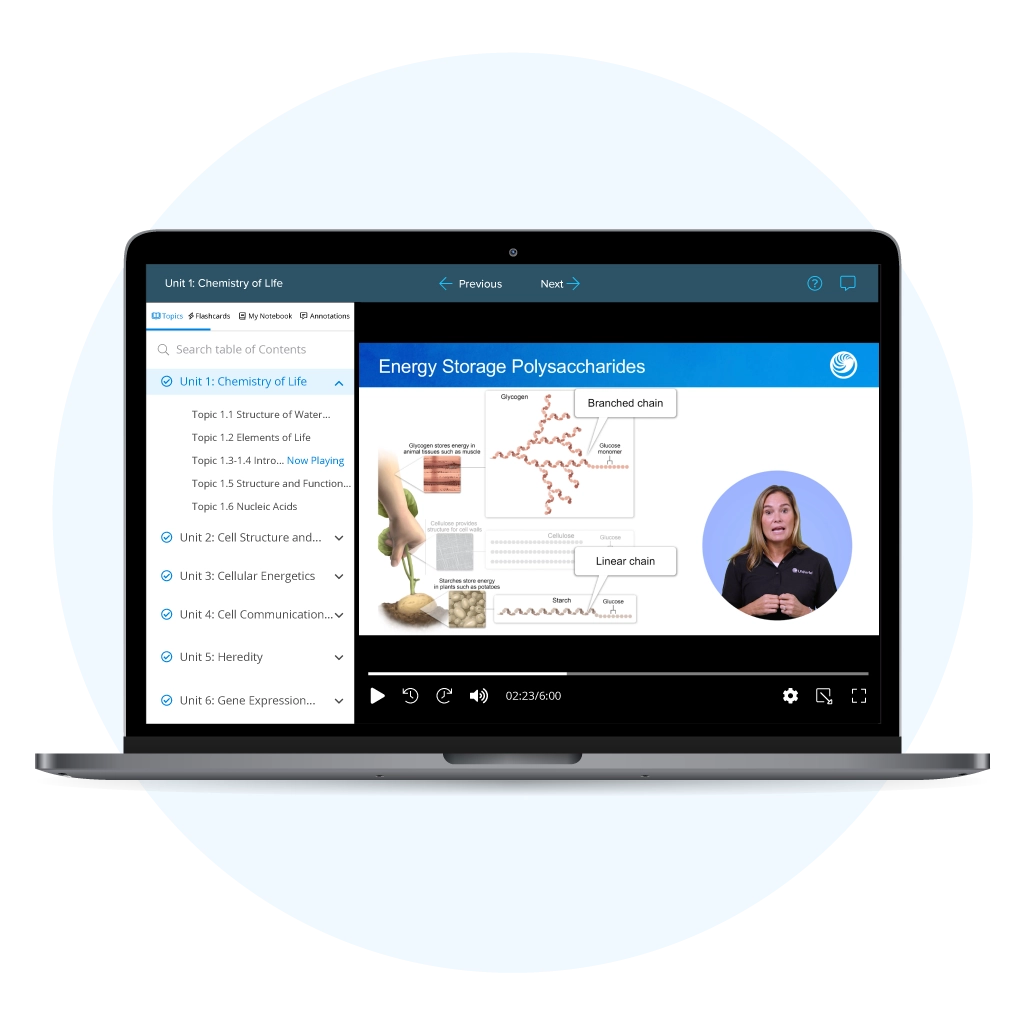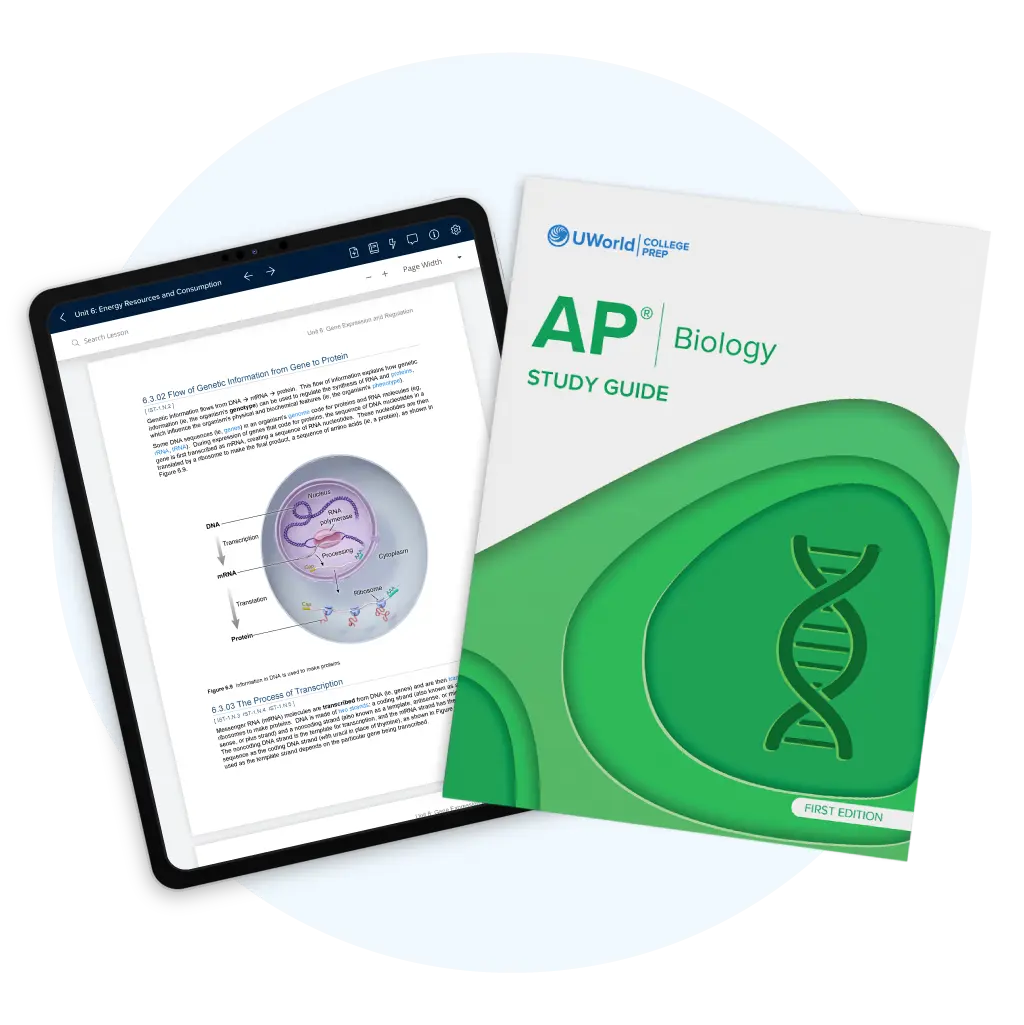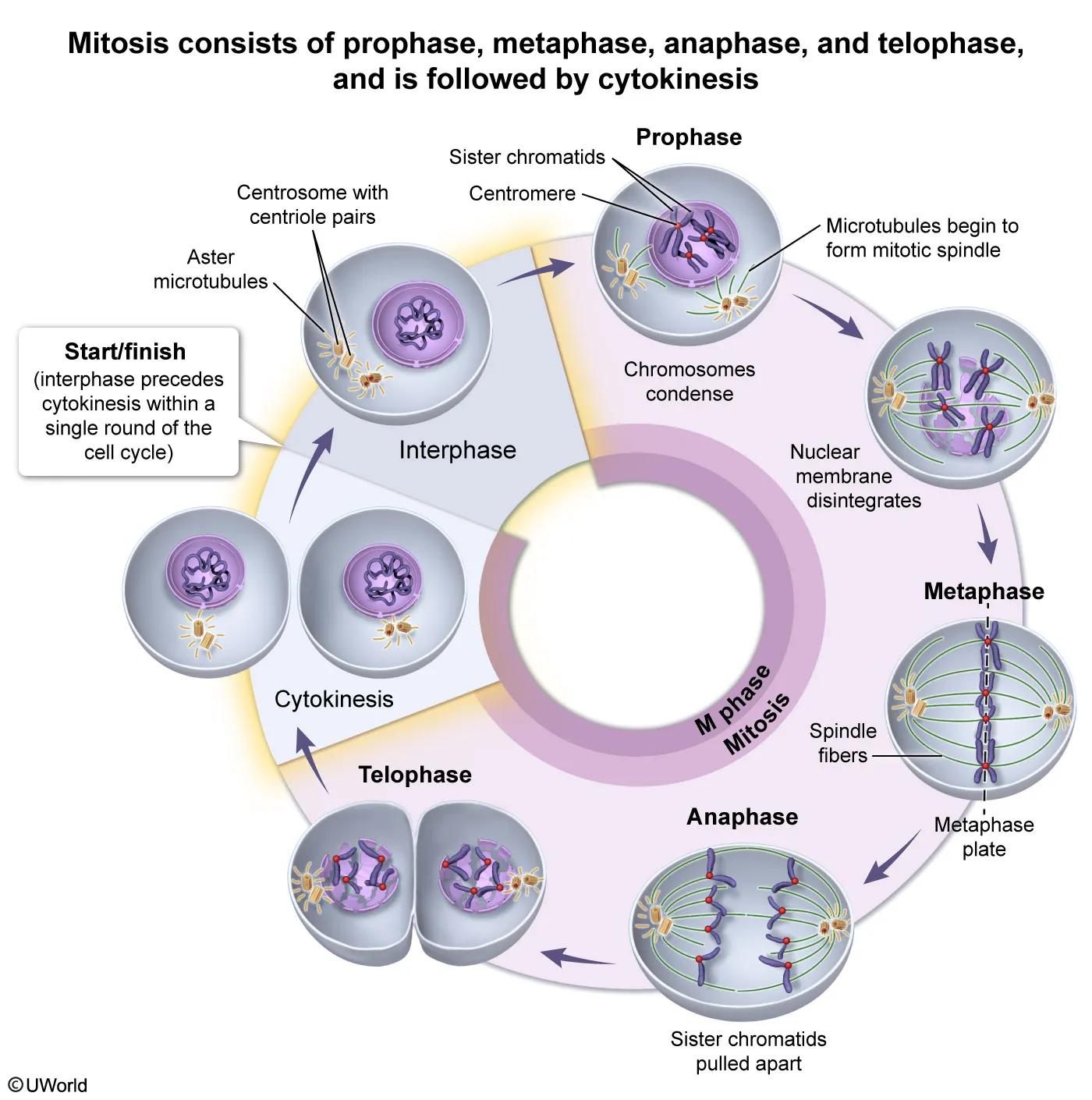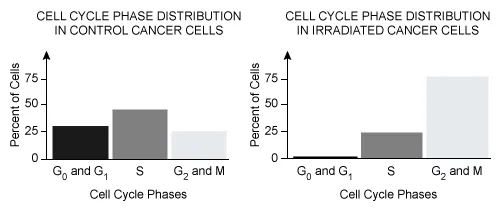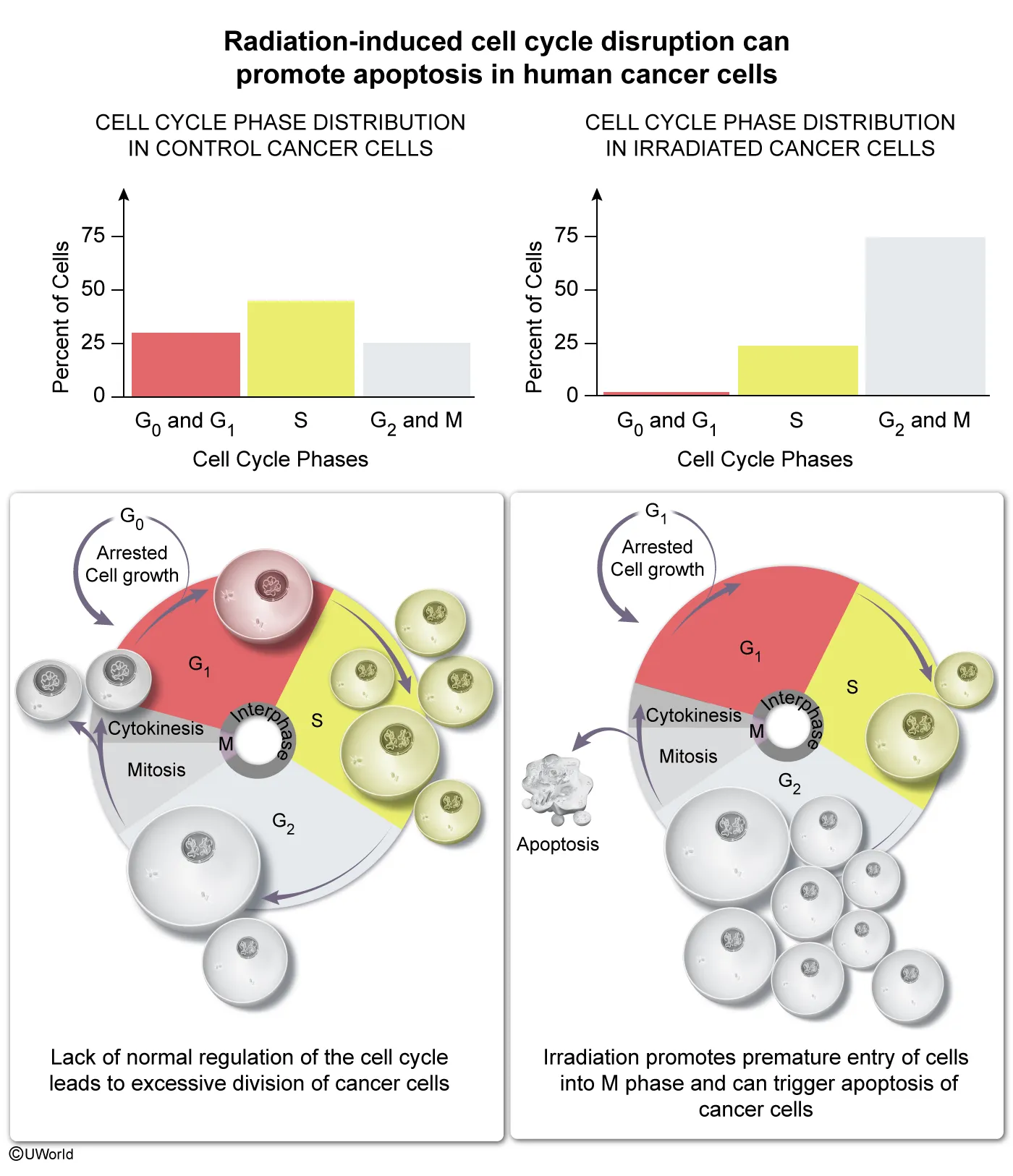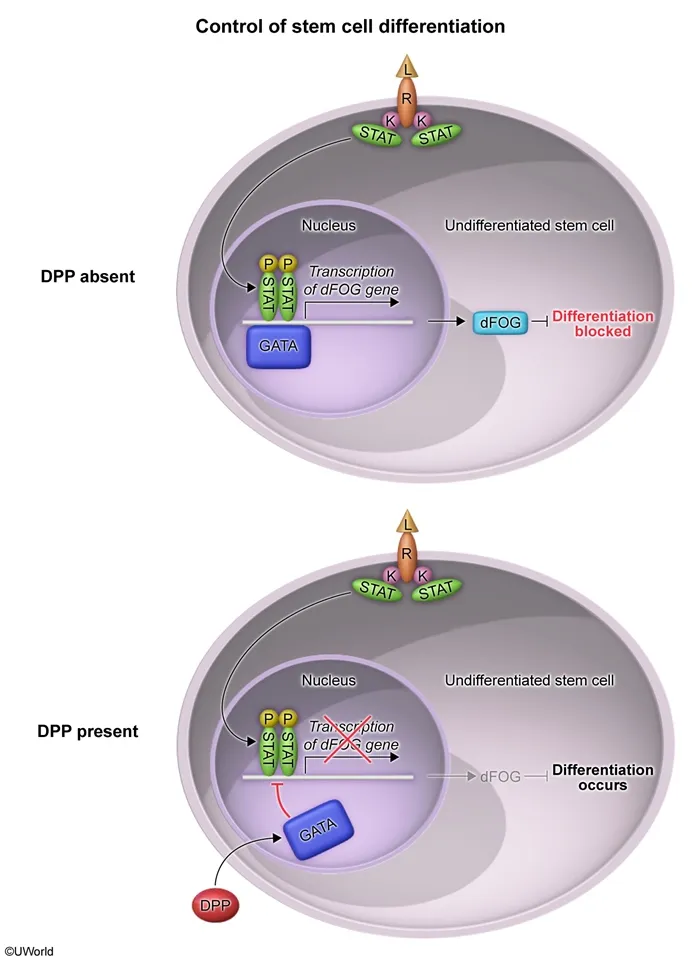AP® Biology Unit 4 Review and Practice Test
Finding it difficult to understand AP Biology Unit 4? AP Bio Unit 4 deals with concepts like cell communication, cell cycle, signaling pathways, checkpoints, and regulation. This guide will help you find ways to simplify the hard concepts and solidify your understanding to prepare you for the exam.
Strengthen Your Knowledge With Our AP Bio Unit 4 Review
Sharpening your understanding of concepts like AP biology, cell communication, and the cell cycle is important to level up your game. And that’s exactly why this review is the best choice for you. It breaks down complex ideas into clear, digestible explanations, highlights what’s most likely to appear on the exam, and gives you practice questions to test your understanding. By focusing on patterns, checkpoints, and signaling pathways, you’ll build the confidence to tackle any AP Biology Unit 4 test with ease.
Engaging Video Lessons
Visualize Unit 4 AP Bio concepts with our concise, engaging video lessons. Each video simplifies difficult processes into easy-to-follow explanations. It covers everything from cell signaling pathways to key checkpoints in the cycle. Watching these lessons helps you connect the dots and understand not just what happens, but why it happens.
Interactive Study Guides
Our interactive study guides make Unit 4 AP Bio more engaging and increase retention. Exploring diagrams, highlighting key points, and taking quizzes will help you progress faster. As the guide is designed to adapt to your pace, it lets you focus on the areas that need improvement. This is a smart, hands-on way to prep for your AP Biology Unit 4 test or tackle FRQs with confidence.
Try AP Biology Unit 4 Practice Test Questions to Check Your Knowledge
Question
Cytokinesis, which is depicted in the image above, is the last of a sequence of steps occurring during mitotic cell division. Which of the following is NOT a stage of mitosis that occurs before cytokinesis during a single round of the cell cycle?
| A. Prophase | |
| B. Interphase | |
| C. Metaphase | |
| D. Anaphase |
Explanation
The eukaryotic cell cycle is divided into interphase and the mitotic (M) phase. During interphase, cells grow and replicate their DNA. Next, the stages of the M phase (ie, mitosis and cytokinesis) occur as follows:
-
Prophase: Replicated DNA condenses to form chromosomes, each consisting of two identical sister chromatids. The nuclear envelope breaks down, and mitotic spindle fibers form (Choice A).
-
Metaphase: Chromosomes attach to spindle fibers and align in the center of the cell (Choice C).
-
Anaphase: Sister chromatids are pulled apart by spindle fibers and move to opposite ends of the cell (Choice D).
-
Telophase and cytokinesis: Spindle fibers disappear, the nuclear envelope reforms around each set of chromosomes (forming two identical nuclei), the chromosomes decondense, and the parent cell undergoes cytoplasmic division (cytokinesis), producing two identical daughter cells.
The question asks for the answer choice that is NOT a stage of mitosis that occurs before cytokinesis during the cell cycle. Although interphase occurs before the mitotic phase, it is not part of mitosis. Therefore, interphase does NOT correspond to a phase of mitosis that occurs before cytokinesis.
Things to remember:
The mitotic phase of the cell cycle occurs in four distinct stages (ie, prophase, metaphase, anaphase, and telophase/cytokinesis) and results in the division of a single parent cell into two identical daughter cells. Interphase (which alternates with the mitotic phase) is the part of the cell cycle during which organelles and DNA are replicated as the cell prepares for mitosis.
Question
Cultured human cancer cells were split into two identical groups. One group was grown under normal culture conditions and was considered the control group of cancer cells. The second group underwent an irradiation treatment known to eventually trigger the death of most of the cells. Apart from irradiation, the irradiated cells were grown under conditions identical to those of the control cancer cells. Several days after irradiation of the second group, but while most of the cells in both groups were still alive, both the control and the irradiated cancer cells were analyzed to determine their cell cycle phase distribution. Which of the following statements most likely explains how irradiation triggers reduced survival of irradiated cells?
| A. Genetic instability is a characteristic of cancer cells, and mutations caused by irradiation prevented the irradiated cells from being able to complete the S phase. | |
| B. Irradiation stimulated cells to progress into the M phase and initiated the steps leading to apoptosis of the irradiated cells. | |
| C. Increased function of the cell cycle checkpoints in the irradiated cells caused the cells to progress too rapidly into the S phase, leading to their death. | |
| D. Cells in the G0/G1 phases replaced the cells that were initially killed by irradiation, and so these cells became more prevalent in the irradiated group. |
Explanation
The cell cycle is highly regulated by various proteins to ensure that cells move into the appropriate phases, do not stay in one phase too long, and do not move to a new phase before they are ready. Various factors (eg, radiation) can lead to nonfunctional, overexpressed, or underexpressed regulatory proteins that disrupt the cell cycle, potentially leading to cancer and/or apoptosis (programmed cell death).
The question describes an experiment investigating responses of human cancer cells to irradiation and asks how irradiation likely triggers reduced survival of the human cancer cells studied. Exposure of cells to radiation can disrupt the cell cycle. Such disruptions can potentially promote early entry into the mitotic (M) phase (ie, cell division phase) of the cell cycle, as occurred in the irradiated cells in the study.
After abnormal entry to the M phase, the cancer cells might continue dividing at abnormally rapid rates, or they might be identified as abnormal at a checkpoint, triggering apoptosis.
(Choice A) If the irradiated cells were unable to complete the S phase, the percentage of cells in the S phase would be greater, not less, than the percentage of cells in the G2/M phases.
(Choice C) Increased cell cycle checkpoint function would act to prevent (not promote) premature S phase entry.
(Choice D) Cells in the G0/G1 phases were less (not more) prevalent in the irradiated group.
Things to remember:
When regulation of the cell cycle is disrupted, cells may divide too rapidly (ie, become cancerous) or may alternatively undergo apoptosis (programmed death).
Question
Certain signal transduction pathways regulate whether stem cells remain as stem cells or differentiate into specific cell types. One such pathway, known to be important in regulating development in flies, is summarized in the diagram above, with pathway components defined in the diagram legend. A signaling polypeptide called Dpp is found to inhibit the transcription factor GATA in this signaling pathway. Based on the diagram, it is most likely that increased levels of Dpp in flies would
| A. cause stem cells to remain unchanged. | |
| B. stimulate stem cells to differentiate. | |
| C. induce transcription of the dFOG gene. | |
| D. reduce phosphorylation of STAT. |
Explanation
During signal transduction, information from an initial signal (eg, a ligand) is relayed to cell targets (usually receptors) and is often augmented by various proteins or second messengers within the cell. These actions initiate a cellular response, which can change if one or more steps in the signal transduction pathway is altered. Such alterations can influence the cell's phenotype.
In the diagram provided, the transcription factor GATA normally induces transcription of dFOG, which blocks differentiation. The question states that GATA is inhibited by the signaling polypeptide Dpp; such inhibition would prevent GATA from inducing dFOG transcription to prevent differentiation. As a result, differentiation will be stimulated when Dpp is present at sufficiently increased levels.
(Choice A) For stem cells to be remain unchanged, differentiation would have to be inhibited. This occurs when GATA is functional in the cell, but inhibition of GATA would have the opposite result (ie, stimulation of differentiation).
(Choice C) When GATA functions properly, dFOG is transcribed. If GATA is inhibited by Dpp, dFOG will not be transcribed.
(Choice D) The diagram shows that STAT is phosphorylated by the kinase before GATA function occurs. Therefore, a polypeptide that inhibits GATA (ie, Dpp) would not influence phosphorylation of STAT.
Things to remember:
Alteration of a signal transduction pathway can change the cell's response to the initial signal and result in a different cellular phenotype.
Stand Out
with a Top Score in AP Biology
Finish your Unit 4 AP Biology review and continue mastering all units with UWorld. Boost your performance and set yourself apart as a strong candidate for competitive colleges, majors, and scholarships by earning a top score.
Get our all-in-one course today!
- Focused AP Bio Videos
- Print & Digital Study Guide
- 500+ Exam-style Practice Questions
- Customizable Quiz Generator
- Adjustable Study Planner
- Realistic Timed Test Simulation
- Colorful Visual Explanations
- Progress Dashboard
- Smart Flashcards & Digital Notebook
Hear From Our AP Students

UWorld’s service is pretty good and helps provide a lot of explanations on subjects I haven’t been confident on before.

The questions here are the most realistic to the AP tests I've seen so far! I appreciate the ability to customize tests as well.

The best part is that all options are well-explained, telling clearly why they are not the right option.
Frequently Asked Questions (FAQs)
What is AP Biology Unit 4, and why is it important for the exam?
AP Biology Unit 4 introduces the principles of cell communication and the cell cycle, two essential concepts that are crucial for mastering the AP Biology exam. Understanding how cells signal, respond, and regulate division builds the foundation for success on AP Bio Unit 4 MCQs, FRQs, and progress check questions. These topics appear frequently because they connect molecular control to biological stability, a key theme in Unit 4 AP Bio reasoning.
Students should focus on ligand-receptor interactions, signal transduction cascades, cyclin-dependent regulation, and checkpoint control. Each of these processes influences cellular balance and is central to both multiple-choice and free-response questions. Regularly reviewing these ideas in your AP Bio Unit 4 study guide improves accuracy on progress check MCQs and exam simulations. UWorld’s AP Biology Unit 4 review uses annotated visuals and data-based practice questions that mirror College Board expectations. The lessons show how communication pathways regulate division, helping you apply knowledge to complex question formats and strengthen performance across the examWhat topics are covered in AP Biology Unit 4: Cell Communication and Cell Cycle?
This unit explains how cells coordinate internal and external activities through signaling and regulation. Major focus areas include:
- Signal transduction pathways and receptors
- Secondary messengers and feedback mechanisms
- Phases of the cell cycle (G1, S, G2, and M)
- Checkpoints and regulation proteins
- Cellular responses such as apoptosis
These concepts form the basis for Unit 4 AP Bio practice tests, FRQs, and progress check MCQs. They are critical for developing reasoning about how biological systems maintain stability. To master them, use diagrams to trace molecular events and connect each pathway to a real cellular process. UWorld’s interactive Unit 4 lessons link signaling with cell division through visual models, helping students internalize patterns that lead to accurate, exam-level understanding.
How should I study for the AP Biology Unit 4 review?
Studying for AP Biology Unit 4 means mastering both AP Biology Cell Communication and the AP Biology Cell Cycle, since these concepts shape every Unit 4 AP Bio assessment. Begin with the AP Bio Unit 4 Study Guide and outline the steps of signal reception, transduction, and response. Summarize how each pathway influences checkpoints within the AP Bio Cell Cycle. Create short paragraphs from your AP Bio Unit 4 Notes that define receptor types, secondary messengers, and feedback mechanisms. This structure makes later recall faster on AP Bio Unit 4 MCQ and AP Bio Unit 4 Progress Check MCQ sets.
Apply learning by alternating written reviews with active testing. After completing each section of the AP Biology Unit 4 Study Guide, answer five questions from a Unit 4 AP Biology Review quiz or AP Biology Unit 4 Practice Test. Follow that with one mini-FRQ. This rhythm links conceptual memory with timed reasoning and strengthens long-term retention.
UWorld’s AP Bio Unit 4 Review platform teaches signaling and regulation through visuals that connect cause and effect. Each explanation models exam-style logic so students can handle both AP Biology Unit 4 MCQ and Unit 4 AP Biology FRQ items confidently. Repetition inside UWorld’s system builds automatic recognition of pathway patterns tested on the AP Bio Unit 4 Test.
What is the best study sequence for AP Biology Unit 4?
A consistent study order builds understanding and prevents overlap between similar topics. Follow this sequence to match the logic used in AP Bio Unit 4 progress check MCQs:
- Study receptors and ligands
- Learn signal transduction pathways
- Understand cellular response mechanisms
- Review cell cycle stages
- Focus on checkpoint control and feedback
- Examine the consequences of regulation failure
Reviewing in this order aligns your preparation with how exam questions progress from signaling to cycle completion. UWorld’s Unit 4 lessons follow this same flow and include practice after every topic. The structure ensures that you connect cell communication with regulatory processes, improving your ability to analyze real biological systems under test conditions.
What is the most effective AP Biology Unit 4 review plan for the last 2 weeks?
A 2-week plan for AP Biology Unit 4 helps students strengthen conceptual understanding and exam strategy through a steady balance of learning, testing, and reflection. The review should alternate between AP Biology Cell Communication, AP Biology Cell Signaling, and the AP Biology Cell Cycle, since these ideas form the foundation of both MCQs and FRQs in the AP Bio Unit 4 Review and AP Biology Unit 4 Test. Recommended schedule:
- Days 1-3: Focus on AP Bio Cell Communication. Review receptors, ligands, and transduction pathways using the AP Bio Unit 4 Study Guide. Watch short lessons or draw pathway flowcharts that explain how external signals cause internal responses.
- Days 4-7: Shift to the AP Bio Cell Cycle. Study checkpoints, cyclins, and regulation failures. Practice recall through AP Bio Unit 4 Progress Check MCQs and summarize each checkpoint in your AP Bio Unit 4 Notes.
- Days 9-10: Take one AP Bio Unit 4 Practice Test and one AP Biology Unit 4 Practice Test under full exam timing. Identify error trends and connect them back to concepts from AP Biology Cell Signaling, and cycle control.
- Days 11-14: Review your weak points through targeted AP Bio Unit 4 FRQs and mixed Unit 4 AP Biology MCQs. Revisit notes to reinforce the connections between signaling and cycle regulation.
UWorld’s AP Bio Unit 4 Review mirrors this plan through timed drills, visual explanations, and data analytics that pinpoint growth areas before test day.
What types of FRQs are asked in AP Biology Unit 4?
The free-response questions in the AP Biology Unit 4 test how well you can explain and apply cellular mechanisms. You may be asked to describe how a specific signaling molecule triggers a cellular response, interpret an experiment about checkpoint regulation, or explain how a mutation affects cycle progression.
To prepare, review past AP Bio Unit 4 FRQs and write concise, evidence-based answers. Focus on linking signal initiation to cell cycle response and use labeled diagrams when possible. UWorld’s FRQ practice sets for Unit 4 include guided examples that show how to write logical explanations and connect data to biological reasoning. The platform models real grading expectations and helps refine clarity and structure in student responses.
How can I improve my score on the AP Biology Unit 4 MCQs?
Improving performance on AP Bio Unit 4 MCQs starts with treating every question set as a feedback tool rather than a test of memorization. The goal is to understand why an answer is correct, not just recall it. Each AP Bio Unit 4 Progress Check MCQ works as a checkpoint that shows how well you grasp core topics like AP Biology Cell Communication and the AP Biology Cell Cycle. Reviewing these carefully helps you measure growth and identify weak links before the AP Biology Unit 4 Test.
- Begin by completing short groups of 10-15 multiple-choice questions after studying each concept in the AP Bio Unit 4 Study Guide.
- Log every incorrect item and note whether the error was conceptual, interpretive, or careless. Revisit those topics using diagrams and targeted examples, then retest yourself after two days.
- Weekly, attempt one full AP Biology Unit 4 Practice Test to confirm that your accuracy improves across all question types.
UWorld’s AP Bio Unit 4 Review system strengthens this process through detailed answer explanations and performance analytics. Its question bank highlights recurring reasoning errors and shows which signaling or checkpoint concepts need reinforcement. By using MCQs as continuous progress checks, you turn each round of practice into a measurable gain in speed, accuracy, and conceptual depth for Unit 4 Cell.
How are cell communication and the cell cycle connected in AP Biology Unit 4?
Cell communication controls the cell cycle by regulating when cells grow, divide, or pause. Growth factors activate signaling cascades that increase cyclin levels, while inhibitory signals suppress division to prevent errors. This coordination ensures that DNA replication and mitosis occur only under the right conditions.
In the AP Bio Unit 4 test, you may encounter FRQs or MCQs asking how disruptions in signaling lead to uncontrolled growth or apoptosis. UWorld’s visual diagrams in the AP Biology Unit 4 review show how external signals influence internal checkpoints. These visualizations help students connect receptor activity with cycle outcomes, a skill essential for high-scoring responses.
How can I retain complex processes like signal transduction and checkpoint control?
Retention improves when you alternate between visual learning and active recall. Start by sketching signal pathways from memory, labeling molecules in the correct sequence. Then test yourself by explaining each checkpoint’s purpose without looking at notes.
Practice retrieval using short quizzes every two days instead of rereading notes repeatedly. UWorld’s AP Biology Unit 4 interactive guides combine repetition and spaced recall. Each question includes explanatory visuals and reflection prompts that strengthen neural connections, helping long-term retention of complex mechanisms like transduction and regulation.
How should I study cell signaling pathways for the AP Bio Unit 4 test?
Organize signaling pathways by type and focus on the key steps in each. Start with G-protein coupled receptors, then study tyrosine kinase and ion channel mechanisms.
Approach the study in three stages:
- Review each pathway’s molecules and sequence
- Identify secondary messengers and cellular outcomes
- Test comprehension with progress check MCQs
Understanding differences among these pathways helps you predict how signals affect target cells. UWorld’s Unit 4 cell signaling lessons reinforce each pathway with diagrams, simulations, and exam-style questions. This structure connects concepts across topics and prepares you for integrated question types found in the official exam.
What is the best AP Biology Unit 4 practice test format?
Use a mixed-format test that includes both MCQs and FRQs to mirror the real exam experience. Dedicate 60 minutes to multiple-choice questions and 30 minutes to free-response writing. Ensure each section includes both signaling and cell cycle questions.
After finishing the test, review mistakes immediately. Note whether errors stem from misreading or conceptual confusion. UWorld’s AP Bio Unit 4 practice test replicates the difficulty and structure of the College Board exam. Its built-in timer and scoring feedback allow students to refine pacing and strengthen test endurance.
When should I begin preparing for the AP Biology Unit 4 test?
Begin focused preparation at least two weeks before your AP Bio Unit 4 test. Spend the first week reviewing notes and visual guides, then use the second week for applied practice and timed testing.
A balanced schedule includes:
- Daily review of signaling and checkpoints
- Alternating progress check MCQs and FRQs
- One full-length Unit 4 practice test midweek
With UWorld’s AP Biology study planner, students can organize review sessions efficiently. Its adaptive reminders and question tracking system ensure consistent practice without burnout before test day.
What are common mistakes students make in AP Bio Unit 4?
Students often confuse feedback inhibition with signal termination, skip details about checkpoint regulation, or memorize pathways without understanding their logic. Others lose points in FRQs by summarizing instead of explaining relationships.
To avoid these mistakes, focus on understanding cause-and-effect links in each process and explain biological reasoning in full sentences. Review data questions carefully before interpreting results. UWorld’s error analysis tools (performance tracking) identify patterns of misunderstanding in AP Bio Unit 4 MCQs and practice tests, converting mistakes into learning opportunities through immediate conceptual feedback.
Where can I find AP Biology Unit 4 notes, cheat sheets, and study guides?
You can find AP Biology Unit 4 study guides, cheat sheets, and notes on several reliable platforms. The College Board website provides free course materials, topic outlines, and progress check questions aligned with official AP standards. Khan Academy also offers video explanations and short concept quizzes that simplify complex topics such as AP Biology Cell Communication and the AP Biology Cell Cycle. These resources are excellent for reinforcing foundational knowledge at no cost.
Look for downloadable materials like AP Bio Unit 4 Study Guide PDFs or printable summaries that include signal transduction pathways, checkpoints, and feedback mechanisms. They work well for quick visual revision and reference before your AP Biology Unit 4 Test. When combined with UWorld’s AP Bio Unit 4 Study Guide, these free tools become significantly more effective. UWorld provides deeper coverage through labeled diagrams, question-based learning, and practice analytics. Its one-page printable summaries pair well with Khan Academy and College Board resources, creating a complete system for mastering Unit 4 Cell Communication and Cell Cycle concepts before the exam.
Are downloadable AP Biology Unit 4 practice materials and PDFs available?
Yes. Students can download AP Bio Unit 4 Practice Test PDFs, study guide worksheets, and FRQ templates from the College Board and Khan Academy websites. These free materials include progress checks, released exam questions, and sample answers that provide insight into how the AP Biology Unit 4 Test is structured. They are excellent for early practice and understanding the official exam format.
To make practice more productive, use these resources alongside UWorld’s AP Bio Unit 4 Review. UWorld offers downloadable and interactive practice materials that include detailed answer explanations, question analytics, and visual breakdowns of AP Biology Cell Signaling and checkpoint control. Using College Board and Khan Academy for free review, then reinforcing with UWorld’s in-depth materials, creates the ideal mix of conceptual learning and exam-level problem solving for the AP Biology Unit 4 Practice Test and the final AP exam.

